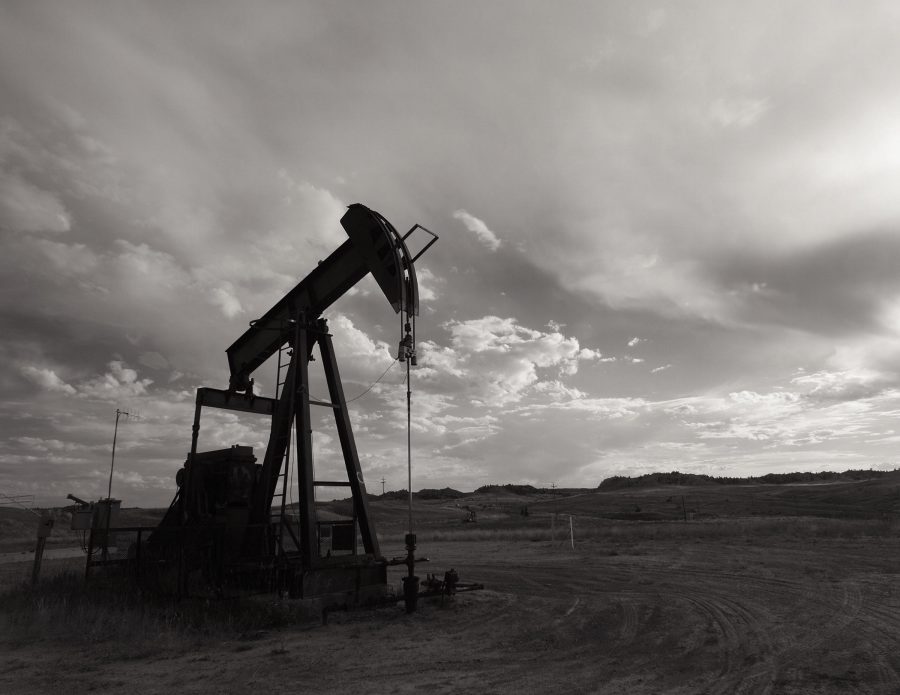The price war between Saudi Arabia and Russia has wreaked havoc on the global crude oil market. Brent crude, $74 a barrel just after the US drone hit on Iran’s General Soleimani’s motorcade in early January, plummeted to 2002 pre-Iraq War lows of $20 before President Trump’s public calls for Moscow and Riyadh to boost prices with a 10-15 MBD output cut boosted Brent to $30 as I write.
The US and Canadian governments have also discussed slapping tariffs on Saudi and Russian oil exports to North America to protect their domestic industries. It makes total strategic sense for President Trump to pledge to do “whatever I have to do” to protect the US shale oil and gas drillers meteoric output growth to 13 MBD has enabled the US to achieve de facto energy independence, a US national security objective.
After all, the US shale oil and gas industry employs 6 million workers in blood red Republican states such as Texas, Oklahoma, North Dakota, Louisiana, Colorado, etc. – states that Trump must win if he is to be re-elected in November. The prospect of mass layoffs and hundreds of corporate bankruptcies in the Permian Basin, Eagle Ford or Basin shale oil reservoirs would be a catastrophe for the Trump White House. This is the reason a President who once trusted OPEC to lower oil prices now orders them to negotiate an output cut deal to boost them. Trump has even hinted at restricting US arms sales to Saudi Arabia – one of its closest allies in the Middle East – if it does not cut its output and boosts prices.
Norway and Canada, both significant oil producers, have indicated that they would join an OPEC output cut deal. The global wet-barrel (physical crude trading) market faces its biggest demand shock in modern history due to the coronavirus pandemic’s catastrophic impact on gasoline, diesel and jet fuel sales. An estimated 20 MBD of demand destruction has taken place since late February in a global market that balanced at 100 MBD. The oil trading firm Trafigura calculated that there are 1 billion barrels of crude oil in storage and supertanker loaders with cargoes of black gold in the North Sea and the straits of Malacca cannot find refineries to buy their crude. In the US, West Texas Midland onshore crude has sold for as low as $10 a barrel. If ever there was a perfect bearish storm for the oil market, this is it.
While Trump claimed he wanted “the free market” to resolve the oil price crash, his threats to impose tariffs on Saudi and Russian oil imports to the US means that the Texas Railroad Commission, which once dominated the global oil market with the Seven Sisters supermajors before the rise of OPEC, might play a crucial role in a coordinated global OPEC Plus output cut pact.
The oil price crash has had a devastating impact on Russia’s oil and gas producers, who simply cannot compete with Saudi Aramco’s $3.8 a barrel direct drilling costs since their oil fields are in West Siberia and the icy wastelands of Sakhalin.
Even though the Kremlin has amassed $500 billion in sovereign wealth assets and reduced Russia’s budget breakeven price to a mere $42 a barrel (Saudi Arabia’s budget breakeven is $83 a barrel), a protracted oil price war would be an economic and political catastrophe for President Putin. The real powerbroker in Russian oil and gas is not Energy Minister Alexander Novak, but Putin’s close friend Igor Sechin, the chairman of Rosneft. Mr. Sechin’s refusal to cut Russian oil production by 500,000 a barrel derailed the OPEC output cut pact brokered by Saudi Arabia’s Oil Minister Prince Abdelaziz bin Salman at Vienna a month ago.
Russian firms were unable to increase production last month since demand vaporized due to the coronavirus pandemic and have signaled they are willing to cooperate with a Saudi led OPEC Plus deal. This could set the stage for the Kingdom to resume its role as OPEC’s swing producer in a historic output cut deal.
The future of the world crude oil market hinges on its three largest producers – Saudi Arabia, Russia and the United States. The stakes are not just about petrocurrency revenues or downstream market shares but economic, geopolitics, national security and even regime survival in many poorer developing countries. The problem for OPEC, Russia and Texas is that even a 15 MBD cut might not be sufficient to offset a demand shock that would well rise to 30 MBD in April. An estimated output cut deal before the world’s storage capacity runs out is mission critical. Yet the real political drama in global oil markets will happen when the coronavirus pandemic finally passes and the global economy limps back into recovery.







